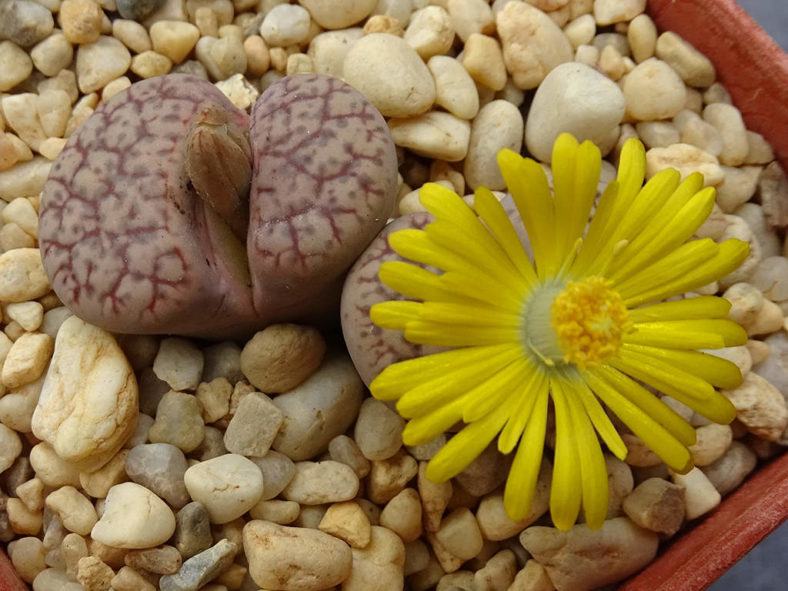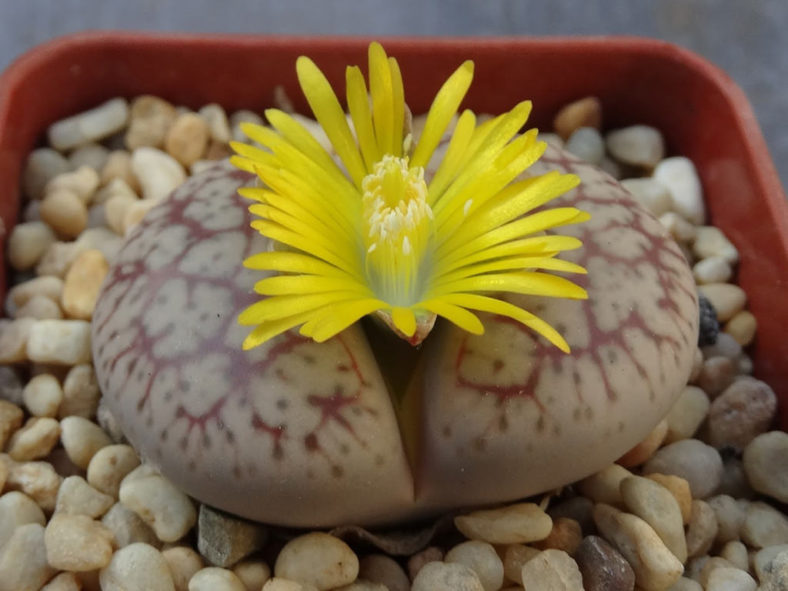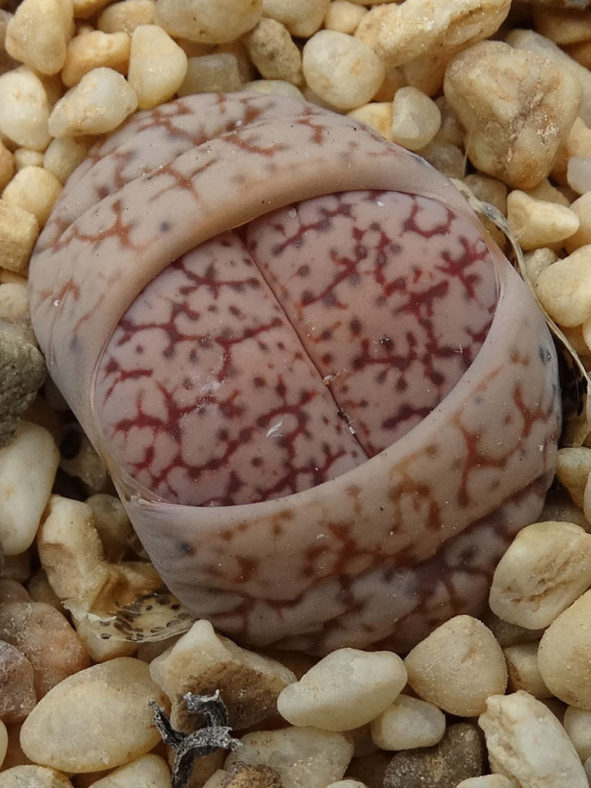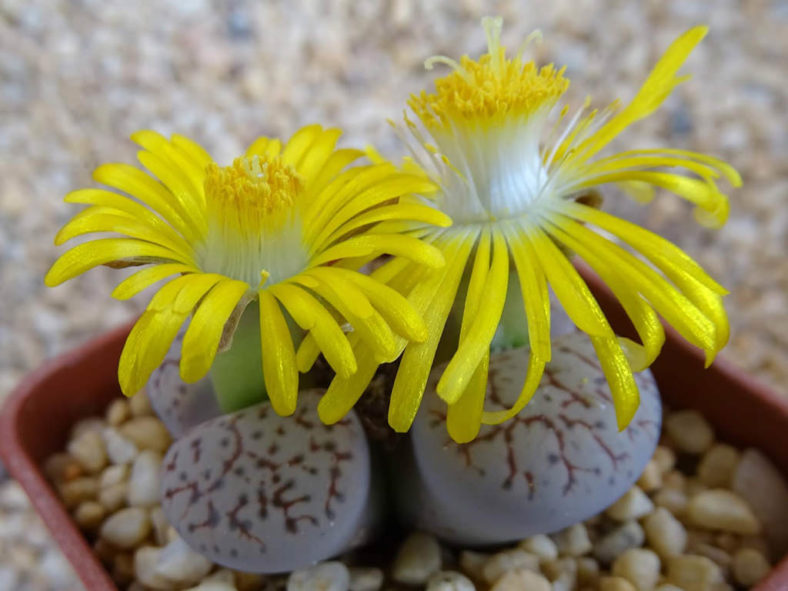Scientific Name
Lithops 'Talisman'
Scientific Classification
Family: Aizoaceae
Subfamily: Ruschioideae
Tribe: Ruschieae
Genus: Lithops
Origin
Lithops 'Talisman' is a hybrid that results from the cross between Lithops gesinae subsp. annae and Lithops gracilidelineata.
Description
Lithops 'Talisman' is a dwarf succulent with a body that consists of two plump and juicy leaves with a deep fissure separating them. The leaves are light grey-brown with a slight violet tinge and a fantastic pattern of lines and spots on the upper surface. The distinct lines are narrow, dark purplish-brown, running continuously from the fissure to the margin in a reticulate pattern. In addition, a purple-brown line runs along the entire length of the fissure. The grey spots are randomly scattered across the upper surface.
The bright yellow flowers emerge from the fissure between the leaves in fall.

How to Grow and Care for Lithops 'Talisman'
Light: A sunny windowsill where the plant receives 4 to 5 hours of direct sunlight during the early part of the day and partial shade during the afternoon is the perfect spot to grow your L. 'Talisman'. You may place the pot on the balcony or in the garden from spring to fall.
Soil: L. 'Talisman' thrives best in a growing medium that will drain quickly. Use a commercial soil mix for succulents, or make your own.
Temperature: High temperatures are not a problem for this plant as long as there is plenty of fresh air, but it is not a cold-hardy succulent. L. 'Talisman' can withstand temperatures as low as 30 °F (-1.1 °C). USDA Plant Hardiness Zones 10a to 11b, 30 to 50 °F (-1.1 to 10 °C).
Watering: Like all Lithops, this succulent has a specific yearly cycle of growth, and it is important to water only during certain stages, but it is also important to keep the soil dry at other stages of its growth. How often you need to water your L. 'Talisman' depends on how quickly the potting mix dries out. It is essential to let the soil dry out between waterings. Stop watering during winter to allow the old leaf pair to dry out and the new pair to develop.
Fertilizing: L. 'Talisman' does not need to be fertilized. It will thrive without any feeding. If you decide to feed, use a fertilizer with high potassium and low nitrogen levels.
Repotting: This small succulent will stay in the same pot for several decades. The common reason for repotting is to divide the plant or allow space for clusters to grow. Repot only when its growing season starts.
Propagation: L. 'Talisman' is most often grown from seeds. If you have a multi-headed plant, it can also be propagated by division. Sow the seeds during the summer.
Learn more at How to Grow and Care for Lithops.
Toxicity of Lithops 'Talisman'
L. 'Talisman' is a non-toxic plant and safe around children and pets.
Links
- Back to genus Lithops
- Succupedia: Browse succulents by Scientific Name, Common Name, Genus, Family, USDA Hardiness Zone, Origin, or cacti by Genus
Photo Gallery
Click on a photo to see a larger version.


